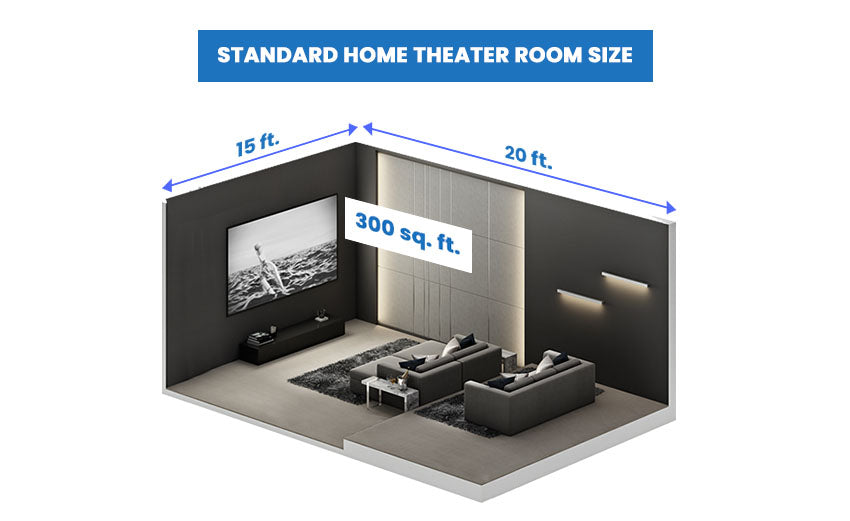Converting a regular room into a home theater can be a fun and exciting project, but it can also be challenging to know where to start. To help you on your journey, this article will provide a step-by-step guide on how to make your dream home theater a reality. Be sure to watch our related video and check out the embedded article links for more information on each topic.

Step 1: Select the Right Room:
When selecting a room to convert into a home theater, it's important to choose a space that has 4 walls and is a medium to large size. A rectangular room is the easiest to set up, but square or irregularly shaped rooms can also work. It's best to avoid rooms that open to other areas of the house, as this can make it difficult to achieve good sound or predictable bass response and may disturb other occupants in the house.

Step 2: Pre-wire the Room
Before setting up your home theater, it's important to plan out the speaker locations and how to route cables to them. Route data and cable/satellite connections as close as possible to your HDTV and/or equipment rack. Additionally, route RCA level cables to designated subwoofer areas or plan on going wireless. If possible, have an electrician install a dedicated 20A line to where your power amplifiers will be installed.
Step 3: Improve Room Acoustics
If your room has tiled floors, vaulted ceilings, and glass doors, you'll need to tame the reflections in order to get the best sound. Consider using thick padded throw rugs at first reflection points, heavy draping over glass doors, and thick padded couches and furniture to absorb sound. For even better sound quality, consider using corner bass traps and other passive room treatments, but be mindful of the aesthetics.

Step 4: Plan the Speaker and Furniture Positions
To achieve optimal performance, it's important to follow guidelines on speaker placements and 5.1 speaker set-up. Remember not to block the line of sight from the speaker drivers to the listeners, and keep the couches or theater seats away from the back or side walls. Subwoofer positioning is also crucial for achieving good bass.
Step 5: Control Lighting and External Noise Sources
For the best viewing experience, it's important to create a low light environment. Consider using drapery or curtains to kill natural light sources, and reduce external noise sources such as HVAC systems to preserve audio dynamic range. If the air handler is in the same room as your theater, use heavy insulation to mask the sound.
Step 6: Configure and Calibrate Your Home Theater
To optimize performance, it's important to set bass management properly, calibrate levels and delay, and calibrate your display using test disks such as Spears/Munsil or THX. Remember that black level is crucial and you may need different calibration settings for different times of the day depending on the room's lighting.
Step 7: Make Your Room Look Like a Home Theater
Finally, dress up the room with movie props, posters, and a popcorn machine to give it that authentic home theater feel. Make sure to have plenty of drink coasters and cup holders to keep your friends from using your speakers as such. And consider going for a theme, such as Star Wars, Star Trek, or a Mafia theme.
By following these basic steps, you can convert any room into a home theater. Share your stories and images on the related forum thread for the benefit of fellow enthusiasts. We'd love to hear your tips and tricks on how you converted your room into a home theater.

